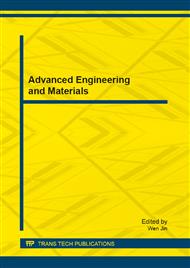p.151
p.158
p.165
p.170
p.176
p.182
p.189
p.194
p.200
Enhanced Photocatalytic Activity of TiO2/Graphene Oxide Nanocomposites Prepared by the Sol-Gel Method
Abstract:
TiO2/graphene oxide (TiO2/GO) nanocomposites were prepared by the sol-gel method using tetrabutyl titanate and graphite oxide as the main raw materials. The microstructure of TiO2/GO nanocomposites was analyzed by X-ray diffraction and transmission electron microscopy. The results showed that graphene oxide was uniformly covered with sphere-like anatase TiO2 nanoparticles, which had a diameter of about 10 nm. Reactive brilliant red X-3B (X-3B) was used as model pollutant to study the photocatalytic activity of the composites. The effect of key factors on X-3B degradation was investigated. The results indicated that the photocatalytic activity of TiO2/GO nanocomposites was higher than that of pure TiO2 and the mixture of TiO2 and graphite oxide under the same conditions, and the nanocomposites had the best photocatalytic activity, when the content of graphene oxide was 100 mg. Moreover, it was found that the rate of photocatalytic degradation decreased with the increase of the initial dye concentration, and the optimum amount of nanocomposites was 0.8g/L when the initial concentration of X-3B solution was 100 mg/L, and the degradation rate could reach 96% after 60 min irradiation.
Info:
Periodical:
Pages:
176-181
Citation:
Online since:
February 2013
Authors:
Keywords:
Price:
Сopyright:
© 2013 Trans Tech Publications Ltd. All Rights Reserved
Share:
Citation:



